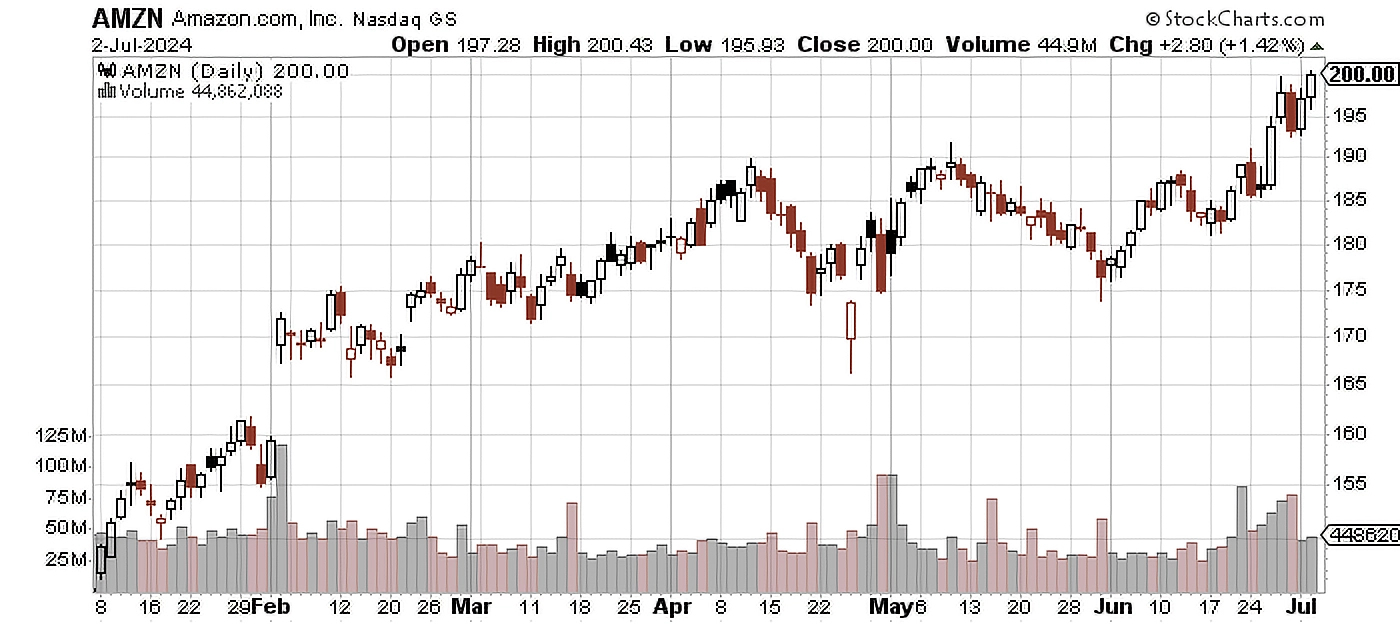Editor's note: Any and all references to time frames longer than one trading day are for purposes of market context only, and not recommendations of any holding time frame. Daily rebalancing ETFs are not meant to be held unmonitored for long periods. If you don't have the resources, time or inclination to constantly monitor and manage your positions, leveraged and inverse ETFs are not for you.
Investing in the funds involves a high degree of risk. Unlike traditional ETFs, or even other leveraged and/or inverse ETFs, these leveraged and/or inverse single-stock ETFs track the price of a single stock rather than an index, eliminating the benefits of diversification. Leveraged and inverse ETFs pursue daily leveraged investment objectives, which means they are riskier than alternatives which do not use leverage. They seek daily goals and should not be expected to track the underlying stock’s performance over periods longer than one day. They are not suitable for all investors and should be utilized only by investors who understand leverage risk and who actively manage their investments. The Funds will lose money if the underlying stock’s performance is flat, and it is possible that the Bull Fund will lose money even if the underlying stock’s performance increases, and the Bear Fund will lose money even if the underlying stock’s performance decreases, over a period longer than a single day. Investing in the Funds is not equivalent to investing directly in AMZN.
It looks like investors have been adding shares of Amazon.com to their carts in recent weeks. The stock has benefited from a recent rotation to large-cap tech leaders (think the Magnificent 7) as well as some company-specific factors. Bulls are optimistic about Amazon’s artificial intelligence (AI) plans and its huge moat in online shopping. Bears, for their part, see risks such as an economic slowdown and the potential for federal regulators to chop the tech giant down to size.
Amazon cleared $200 a share and there are several reasons why the stock could see further movement from here. The company’s quarterly earnings (slated for August 1) stand out as a major catalyst—and one that should offer clues on the major factors cited by bulls and bears. Depending on the numbers and the market’s reaction, the stock could continue its powerful uptrend or experience a nasty bearish reversal. Analysts currently expect earnings of $1.03 per share*. First-quarter numbers handily beat estimates, with the company reporting profits of $1.17 per share versus forecasts for $0.83.
Another key upcoming catalyst is the 10th annual Prime Day sale on July 16-17.
From a technical standpoint, AMZN has been acting well. It held support around $175 per share in early June, and a few weeks later punched through overhead resistance around $190 to sail to new highs. That $190 ceiling had been tested twice before, so the successful breakout gave credence technicians who say that triple tops rarely hold.
Below is a daily chart of Amazon as of July 2.

Source: StockCharts.com, July 2, 2024.
Candlestick charts display the high and low (the stick) and the open and close price (the body) of a security for a specific period. If the body is filled, it means the close was lower than the open. If the body is empty, it means the close was higher than the open.
The performance data quoted represents past performance. Past performance does not guarantee future results.
Bullish Catalysts for AMZN
With the recent run Amazon joined the $2 trillion market cap club. It’s not as exclusive as the $3 trillion one that’s currently reserved for Apple, Microsoft, and Nvidia. But, AMZN’s valuation is a testament to how much of a behemoth it has become.
Here are some potentially bullish catalysts that could keep the stock trending north:
- Strength in Amazon Web Services. The company’s cloud offering, known by the initials AWS, is an important component of both revenue and earnings. And bulls on the stock expect this to continue. Mizuho analyst James Lee told clients in late June that based on channel checks, he estimates AWS (helped by its generative AI product) will have 2024 revenue growth in the 20% range, which exceeds the consensus forecast of 18% (Investors.com). AMZN’s earnings report should shine some light on whether AWS is on track for a stellar year.
- More Details on Its Massive AI Push. The Wall Street Journal reported on June 30 that Amazon is set to spend a staggering $100 billion over the next decade to fuel its AI ambitions by investing in data centers. Right now, there aren’t many details available, meaning investors don’t have a good sense of how to value the initiative. Analysts are sure to ask a lot of questions on the second-quarter earnings call about how and when the $100 billion will be deployed. If the market senses that profitability from the plan isn’t too far off, it might start to reflect this push in the stock’s valuation.
- Macro Matters, Too. Amazon is primarily a retailer still, and so what’s happening in the broader economy matters a lot. Traders will pay attention to June retail sales, which are slated to be released on July 16. May’s report came in essentially flat. Amazon bulls would love to see a bullish print to silence those who say the consumer is in trouble.
Bearish Catalysts for AMZN
It’s not necessarily all sunshine and roses for AMZN. Especially after a strong run like we’ve seen, traders should be mindful of potential factors that could send the stock lower. Here are some bearish catalysts:
- Competition Issues. The company faces two significant issues around competition. First, the push by Temu into the U.S. market could eat away at Amazon’s market share. Second, there’s an ongoing Federal Trade Commission lawsuit that accuses Amazon of running a monopoly. Analysts will also likely query management about this risk on the upcoming quarterly earnings call, and traders should pay close attention to any answers.
- A Disappointing Prime Day? Amazon’s annual Prime Day is on tap. It’s watched by investors for a sense of how the company’s retail business is faring. While sales numbers won’t impact second-quarter results, they will be an indication of how the rest of the year is likely to play out. Last year, customers purchased over 375 million discounted items worldwide.
- About that U.S. Consumer. Traders will also be keenly observing the June retail sales print. The consumer may be sputtering due to inflation, interest rates, and excess savings from the pandemic running out. A negative print could send AMZN bulls heading for the exits and embolden the bears.
How to Play AMZN with Leverage
Both bulls and bears on AMZN have decent arguments at their disposal. Aggressive bullish traders looking to amplify potential gains can use the Direxion Daily AMZN Bull 2X Shares (Ticker: AMZU). This leveraged ETF seeks daily investment results, before fees and expenses, of 200% of the performance of Amazon.com, Inc. common stock. Bears, meanwhile, can potentially profit from weakness in the stock with the Direxion Daily AMZN Bear 1X Shares (Ticker: AMZD). AMZD is an unleveraged ETF that seeks daily investment results, before fees and expenses, of 100% of the inverse (or opposite) of the performance of shares of Amazon.com, Inc. common stock.
*Definitions and Index Descriptions
An investor should carefully consider the Fund’s investment objective, risks, charges, and expenses before investing. The Fund’s prospectus and summary prospectus contain this and other information about the Direxion Shares. To obtain the Fund’s prospectus and summary prospectus call 866-476-7523 or visit our website at direxion.com. The Fund’s prospectus and summary prospectus should be read carefully before investing.
The Funds have derived all disclosures contained in this document regarding Amazon.com, Inc. from publicly available documents. In connection with the offering of each Fund’s securities, neither the Funds, the Trust, nor the Adviser or any of its respective affiliates has participated in the preparation of such documents. Neither the Funds, the Trust nor the Adviser or any of its respective affiliates makes any representation that such publicly available documents or any other publicly available information regarding Amazon.com, Inc. is accurate or complete. Furthermore, the Funds cannot give any assurance that all events occurring prior to the date hereof (including events that would affect the accuracy or completeness of the publicly available documents described above) that would affect the trading price of Amazon.com, Inc. have been publicly disclosed. Subsequent disclosure of any such events or the disclosure of or failure to disclose material future events concerning Amazon.com, Inc. could affect the value of a Fund’s investments with respect to Amazon.com, Inc. and therefore the value of the Funds.
Consumer Discretionary Sector Risk — Because companies in the consumer discretionary sector manufacture products and provide discretionary services directly to the consumer, the success of these companies is tied closely to the performance of the overall domestic and international economy, including the functioning of the global supply chain, interest rates, competition and consumer confidence.
Amazon.com, Inc. Investing Risk — Amazon.com, Inc. faces risks associated with intense competition across different industries, including physical, e-commerce omni channel retail, e-commerce services, web and infrastructure computing services, electronic devices, digital content, advertising, grocery, and transportation and logistics services; the expansion into new products, services, technologies and geographic regions; its international activities; the variability in the demand for its products and services; fraudulent and unlawful activities of sellers; intellectual property rights; successfully optimizing and operating its fulfilment network and data centers; data loss or other security breaches; maintaining and hiring necessary key management personnel; maintaining good supplier relationships; the success of acquisitions or joint ventures or other investments; its rapidly evolving and expanding business model; and legal, regulatory, tax liability and litigation issues.
Direxion Shares Risks – An investment in each Fund involves risk, including the possible loss of principal. Each Fund is non-diversified and includes risks associated with a Fund concentrating its investments in a particular security, industry, sector, or geographic region which can result in increased volatility. A Fund's investments in derivatives such as futures contracts and swaps may pose risks in addition to, and greater than, those associated with directly investing in securities or other investments, including imperfect correlations with underlying investments or the Fund's other portfolio holdings, higher price volatility and lack of availability. As a result, the value of an investment in a Fund may change quickly and without warning. Risks of the Funds include Effects of Compounding and Market Volatility Risk, Derivatives Risk, Counterparty Risk, Rebalancing Risk, Intra-Day Investment Risk, Amazon.com, Inc. Investing Risk, Market Risk, Industry Concentration Risk, Indirect Investment Risk, Cash Transaction Risk and risks specific to the consumer discretionary sector and internet company industry. Additional risks include, for the Direxion Daily AMZN Bull 2X Shares, Leverage Risk and Daily Correlation Risk, and for the Direxion Daily AMZN Bear 1X Shares, Shorting or Inverse Risk as well as Daily Inverse Correlation Risk. Please see the summary and full prospectuses for a more complete description of these and other risks of the Funds.
